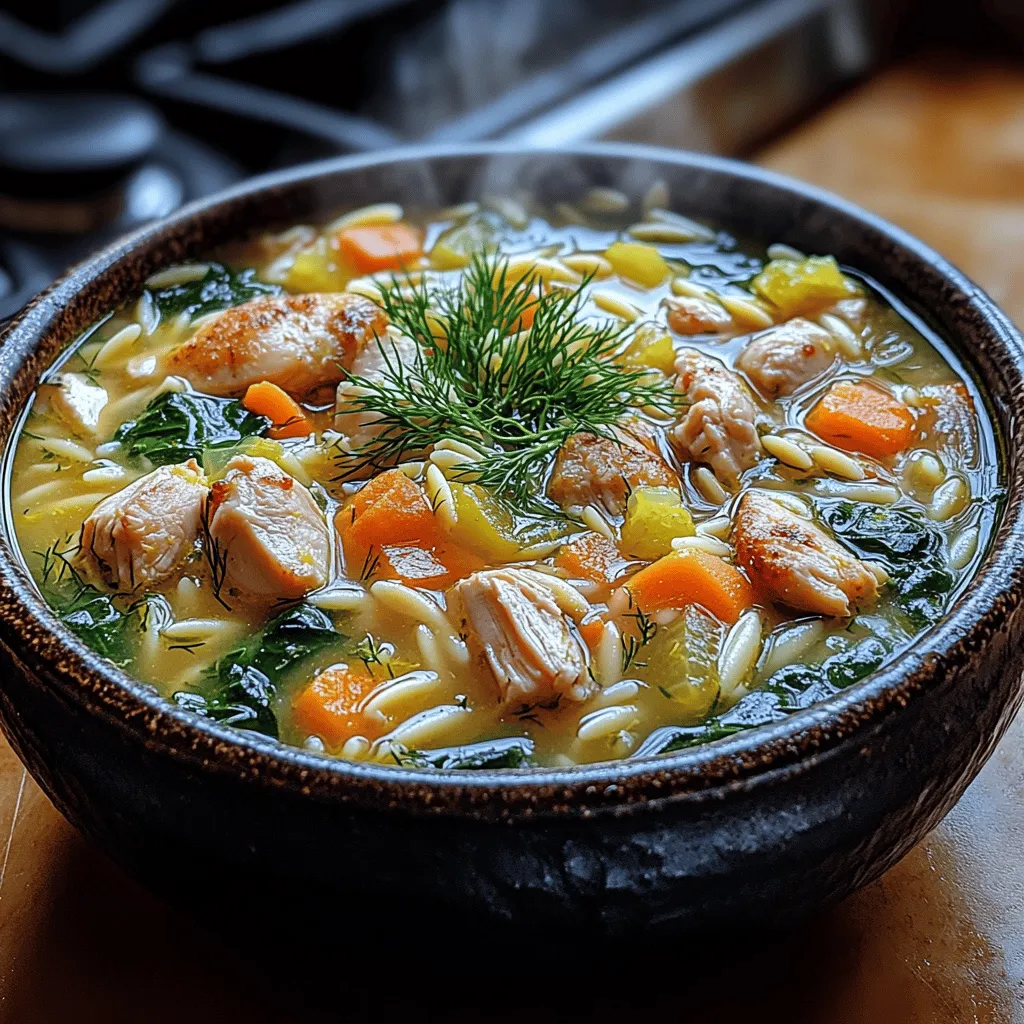Introduction
Beef Stroganoff is a beloved dish that has delighted palates around the world for generations. Originating from Russia in the 19th century, this creamy and savory dish is a testament to the ingenuity of home cooks and chefs alike. While its exact origins are still debated, it is widely accepted that the dish was named after the Stroganov family, a wealthy merchant family known for their culinary contributions. Traditionally made with tender pieces of beef, a rich sour cream sauce, and mushrooms, Beef Stroganoff has found its way into the hearts and homes of many cultures, evolving into numerous variations while maintaining its core appeal.
This comforting dish is not just a meal; it’s an experience that brings warmth and satisfaction, making it a favorite for family dinners, gatherings, and even special occasions. The combination of tender beef and earthy mushrooms enveloped in a creamy sauce served over a bed of egg noodles or rice creates a hearty meal that resonates with comfort. In this guide, you will learn everything you need to know to create your own classic Beef Stroganoff, from understanding the ingredients to mastering the cooking techniques that will elevate your dish.
Whether you’re a seasoned cook or a novice in the kitchen, this comprehensive recipe guide will provide you with the insights and instructions needed to prepare Beef Stroganoff that rivals your favorite restaurant’s offering. Expect detailed ingredient breakdowns, step-by-step preparation methods, and tips for enhancing flavor and texture throughout the cooking process.
Understanding the Ingredients
To create an exceptional Beef Stroganoff, it is essential to understand the key ingredients that contribute to its distinctive flavor and texture. Each component plays a significant role, and knowing how to select and prepare them will set the stage for your dish.
Beef: Choosing the Right Cut
The beef is the star of Beef Stroganoff, and selecting the right cut is crucial for achieving tenderness and flavor. The most commonly used cuts include sirloin, tenderloin, and ribeye.
– Sirloin: This cut is widely preferred due to its balance of flavor and tenderness. It’s also more economical compared to tenderloin, making it a popular choice for home cooks.
– Tenderloin: Known for its melt-in-your-mouth texture, tenderloin is the most tender cut of beef. However, it can be on the pricier side, so it’s ideal for special occasions.
– Ribeye: This cut is well-marbled, providing great flavor and juiciness. While not as commonly used for Stroganoff, ribeye can add a rich taste to the dish.
When selecting your beef, look for cuts that have a nice marbling of fat, as this will render during cooking and enhance the flavor of your Stroganoff.
Mushrooms: Varieties That Work Best
Mushrooms are another essential ingredient in Beef Stroganoff, adding depth and an earthy flavor to the dish. While there are many mushroom varieties to choose from, the following are ideal for this recipe:
– Cremini Mushrooms: These small, brown mushrooms offer a robust flavor and firm texture, making them a great choice for Stroganoff.
– White Button Mushrooms: Mild in flavor, these mushrooms are widely available and can easily be incorporated into the dish.
– Portobello Mushrooms: For a meatier texture and rich flavor, consider using sliced portobello mushrooms. They can elevate the dish and add a unique twist.
Regardless of the type you choose, ensure that the mushrooms are fresh and free from blemishes for the best flavor.
Onions and Garlic: Their Role in Flavor
Onions and garlic are the aromatic backbone of many savory dishes, and Beef Stroganoff is no exception. They contribute layers of flavor that complement the beef and mushrooms beautifully.
– Onions: Yellow onions are commonly used in this dish due to their balance of sweetness and sharpness. When sautéed, they become sweet and caramelized, enhancing the overall taste of the Stroganoff.
– Garlic: Fresh garlic provides a fragrant and pungent flavor that elevates the dish. It’s best to use minced garlic for a strong flavor infusion, but be cautious not to burn it during cooking, as this can lead to bitterness.
Broth and Sour Cream: Creating the Sauce
The sauce is what makes Beef Stroganoff particularly indulgent and creamy. The combination of broth and sour cream creates a rich and velvety sauce that binds all the ingredients together.
– Broth: Beef broth or stock is recommended for a deeper flavor profile. Homemade stock is ideal, but quality store-bought broth can work just as well. Avoid low-sodium options, as they may lack flavor.
– Sour Cream: This ingredient adds creaminess and tang to the sauce, balancing the richness of the beef. Full-fat sour cream is preferred for a luxurious texture, but Greek yogurt can be used as a healthier alternative.
Optional Ingredients to Customize Your Dish
While traditional Beef Stroganoff is delicious as is, you may want to customize your dish with additional ingredients that can enhance the overall flavor or add a personal touch.
– Mustard: A teaspoon of Dijon mustard can add a subtle tang that brightens the dish.
– Paprika: A sprinkle of smoked paprika can add a depth of flavor and a hint of smokiness.
– Worcestershire Sauce: A splash of this sauce can enhance the umami flavor in your Stroganoff.
Wine Selections for Deglazing
Deglazing is an important step in developing the sauce, allowing you to scrape up the flavorful browned bits from the pan. When choosing a wine for deglazing, consider:
– Red Wine: A dry red wine, such as Cabernet Sauvignon or Merlot, can complement the beef and add depth to the sauce.
– White Wine: If you prefer a lighter sauce, a dry white wine like Chardonnay or Sauvignon Blanc can also work well.
Be sure to use a wine that you enjoy drinking, as the flavors will concentrate and affect the final dish.
Herbs and Seasonings for Added Depth
Enhancing the flavor of your Beef Stroganoff can be achieved through the strategic use of herbs and seasonings. Some choices that work well include:
– Thyme: Fresh or dried thyme adds an aromatic, earthy note that pairs beautifully with beef.
– Parsley: Fresh parsley not only brightens the dish but also adds a pop of color when sprinkled on top before serving.
– Salt and Pepper: Essential for seasoning, these basic ingredients should be used liberally to enhance the overall flavor of the dish.
Preparing the Beef Stroganoff
Now that we’ve covered the essential ingredients, it’s time to delve into the preparation of Beef Stroganoff. This section will guide you through essential steps to ensure your dish turns out perfectly.
Step-by-Step Preparation of the Beef
The first step in making Beef Stroganoff is to prepare the beef properly. Follow these guidelines to achieve tender, flavorful meat.
1. Slice the Beef: Begin by slicing your chosen beef cut against the grain into thin strips, approximately 1/4 inch thick. This technique helps break down muscle fibers, resulting in more tender bites. If your beef is slightly frozen, it’s easier to slice thinly, so consider placing it in the freezer for about 30 minutes before cutting.
2. Marinate the Beef: For added flavor and tenderness, you can marinate the beef strips in a mixture of salt, pepper, and a splash of Worcestershire sauce for about 15-30 minutes. This step enhances the overall flavor profile and ensures the meat is well-seasoned.
Proper Slicing Technique for Tenderness
When slicing the beef, always aim to cut against the grain. This means cutting perpendicular to the direction of the muscle fibers. Doing so shortens the fibers, making each bite more tender.
Tips for Marinating or Seasoning Beef
If you choose to marinate your beef, keep it simple. A basic combination of salt, pepper, and a touch of acidity (like lemon juice or vinegar) can work wonders in tenderizing the meat. Aim for a short marination time—longer isn’t always better for beef, especially when using acidic ingredients.
Cooking the Mushrooms and Aromatics
With the beef prepped, it’s time to focus on the mushrooms and aromatics. Here’s how to do it effectively:
1. Sauté the Mushrooms: In a large skillet or pan, heat a tablespoon of oil (olive oil or vegetable oil) over medium-high heat. Once hot, add the sliced mushrooms in a single layer. Avoid overcrowding the pan; this ensures they brown properly rather than steam. Cook for about 5-7 minutes or until they are golden brown and have released their moisture. Remove the mushrooms from the pan and set aside.
2. Cook the Onions and Garlic: In the same skillet, add another tablespoon of oil if needed. Once hot, add the chopped onions and cook until they become translucent (about 3-5 minutes). Add minced garlic and cook for an additional minute, stirring frequently to prevent burning.
Techniques for Achieving the Perfect Sauté
To achieve a perfect sauté, keep the following tips in mind:
– Preheat the Pan: Always ensure your pan is hot before adding ingredients, which allows for proper browning.
– Don’t Overcrowd: Cooking in batches if necessary helps maintain the temperature of the pan, ensuring your ingredients sauté rather than steam.
– Stir Sparingly: Allow the ingredients to sit for a moment without stirring to develop a nice brown crust before moving them around.
Balancing Flavors and Textures
As you cook the mushrooms and aromatics, taste your ingredients along the way. This is essential for balancing flavors. If the onions taste too sweet, a pinch of salt can help. If the garlic is too strong, consider adding a bit more broth to dilute the flavor.
—
In the next part of this guide, we will explore how to create the rich sauce that defines Beef Stroganoff, along with more cooking techniques that will ensure your dish is perfect every time. Stay tuned!
Advantages of Each Cooking Method for Greek Lemon Chicken Soup
When it comes to preparing Greek Lemon Chicken Soup, also known as Avgolemono, you have several cooking methods to choose from. Each method offers unique advantages that can enhance the flavor and texture of the dish.
1. Stovetop Method: This traditional approach allows you to control the cooking process closely. You can monitor the chicken’s doneness and adjust the seasoning as needed. The stovetop method also enables you to easily incorporate fresh herbs and vegetables, giving you a vibrant and aromatic soup.
2. Slow Cooker: Using a slow cooker is an excellent way to develop deep flavors without the need for constant attention. The low and slow cooking process tenderizes the chicken beautifully while allowing the flavors to meld. This method is particularly convenient for busy schedules, as you can set it and forget it.
3. Pressure Cooker: For those who are short on time but still want a rich and flavorful soup, a pressure cooker is ideal. This method significantly reduces cooking time, making it possible to enjoy a hearty bowl of soup in under an hour. The pressure cooker also helps to retain moisture in the chicken, ensuring a juicy result.
Timing Considerations for Different Cooking Styles
Timing is crucial for achieving the perfect Greek Lemon Chicken Soup, regardless of the method you choose.
– Stovetop: Typically, you should simmer the soup for about 30 to 40 minutes. Ensure the chicken is thoroughly cooked (165°F internal temperature) and the flavors have had time to infuse.
– Slow Cooker: For the slow cooker, allow the chicken to cook on low for 6 to 8 hours or on high for 3 to 4 hours. This method requires a longer time but results in exceptionally tender chicken and a richly flavored broth.
– Pressure Cooker: In a pressure cooker, 10 to 15 minutes under high pressure is sufficient. After cooking, allow for a natural release for about 10 minutes before quick-releasing the remaining pressure. This ensures that the chicken remains moist and the soup is packed with flavor.
Tips for Avoiding Common Pitfalls
Making Greek Lemon Chicken Soup is relatively straightforward, but there are a few common pitfalls to avoid to ensure your soup turns out perfect every time.
– Preventing Tough Meat: Overcooking the chicken can result in a tough texture. To avoid this, always check the chicken’s internal temperature and remove it from the heat as soon as it reaches 165°F. If using the slow cooker, consider adding the chicken later in the cooking process to prevent it from becoming dry.
– Ensuring the Sauce is Not Too Thin: The consistency of your soup is key to its enjoyment. If you find your soup is too thin, you can thicken it by whisking in an additional egg yolk mixed with lemon juice or cornstarch dissolved in water after cooking. For a creamier texture, consider adding a splash of heavy cream just before serving.
Serving Suggestions
To enhance your Greek Lemon Chicken Soup experience, consider these traditional and creative serving suggestions.
– Traditional Accompaniments: Serve the soup with a side of crusty bread or warm pita to soak up the delicious broth. A fresh Greek salad, featuring tomatoes, cucumbers, olives, and feta cheese, pairs wonderfully and adds a refreshing contrast.
– Best Types of Pasta or Noodles: If you prefer a heartier version, adding orzo pasta to your soup can create a satisfying meal. Cook the orzo separately and stir it in just before serving, ensuring it doesn’t become mushy.
– Alternative Serving Options: For a comforting twist, consider serving the soup over a bed of rice or alongside creamy mashed potatoes. This adds a filling component while complementing the soup’s flavors.
– Presentation Tips: To make your soup visually appealing, serve it in a bowl garnished with fresh dill or parsley. A sprinkle of lemon zest can also add a pop of color and a hint of citrus aroma.
– Garnishing Ideas: Fresh herbs are the perfect finishing touch for Greek Lemon Chicken Soup. Consider using chopped cilantro or mint for an extra burst of flavor. A drizzle of olive oil can enhance richness and add a glossy finish.
Pairing Beverages with Greek Lemon Chicken Soup
Selecting the right beverage can elevate your dining experience. Here are some great options that complement the flavors of Greek Lemon Chicken Soup.
– Wine Pairings: A crisp white wine such as a Sauvignon Blanc or a light-bodied Pinot Grigio pairs beautifully with the bright flavors of the soup. These wines have acidity that echoes the lemon in the dish, enhancing the overall taste.
– Red vs. White Options: If you prefer red wine, opt for a light red such as a Gamay or a Grenache. These wines are not overly tannic and won’t overpower the delicate flavors of the soup.
– Non-Alcoholic Beverages: For a non-alcoholic option, consider serving sparkling water with a splash of lemon or a refreshing iced herbal tea. These light beverages will cleanse the palate and complement the soup nicely.
– Perfect Soda or Mocktail Pairings: A citrus-flavored soda or a light mocktail made with lemon, mint, and soda water can also enhance your meal. The effervescence and freshness will balance the richness of the soup.
Storing and Reheating Leftovers
If you find yourself with leftovers, proper storage and reheating techniques are essential to maintain the soup’s quality.
– Best Practices for Storing: Allow the soup to cool to room temperature before transferring it to an airtight container. Store it in the refrigerator for up to 3 days or freeze for longer storage.
– How to Refrigerate or Freeze Leftovers: When freezing, consider portioning the soup into smaller containers for easier thawing. Label the containers with the date to keep track of freshness.
– Tips for Reheating Without Losing Flavor or Texture: Reheat the soup gently on the stovetop over low heat, stirring occasionally. If the soup has thickened too much, add a splash of chicken broth or water to reach the desired consistency. Avoid boiling, as this can cause the egg mixture to curdle.
Exploring Variations of Greek Lemon Chicken Soup
While the traditional recipe is delicious, exploring variations can lead to exciting new flavors and textures.
– International Takes on the Classic Recipe: Many cultures have their own versions of lemon chicken soup. For example, Turkish Tarator features similar ingredients but includes yogurt for creaminess, while Italian Lemon Chicken Soup often incorporates capers for a briny twist.
– Greek Origins and Traditional Preparations: Avgolemono soup is a staple in Greek cuisine, often made with leftover roast chicken or turkey. This traditional preparation showcases the dish’s versatility and ability to use pantry staples.
– American Adaptations and Modern Twists: In the U.S., it’s common to find variations that incorporate vegetables such as carrots and celery, creating a heartier soup. Some recipes use cream for added richness, appealing to modern palates.
– Vegetarian and Alternative Meat Options: For a vegetarian version, substitute chicken with chickpeas or tofu and use vegetable broth. The lemony flavor can still shine, providing a refreshing alternative.
– Using Mushrooms or Plant-Based Proteins: Incorporate mushrooms for an umami boost or consider plant-based proteins like lentils or quinoa to create a satisfying meatless meal.
Conclusion
Making Greek Lemon Chicken Soup is a rewarding experience that brings a taste of Mediterranean cuisine to your home. The process of crafting this dish allows you to experiment with flavors and techniques, creating a meal that is both comforting and nourishing. Whether you stick with the traditional recipe or explore variations, the joy of sharing this beloved soup with family and friends will surely enhance your culinary journey. Embrace the creativity of cooking and let this delightful soup become a staple in your kitchen.


